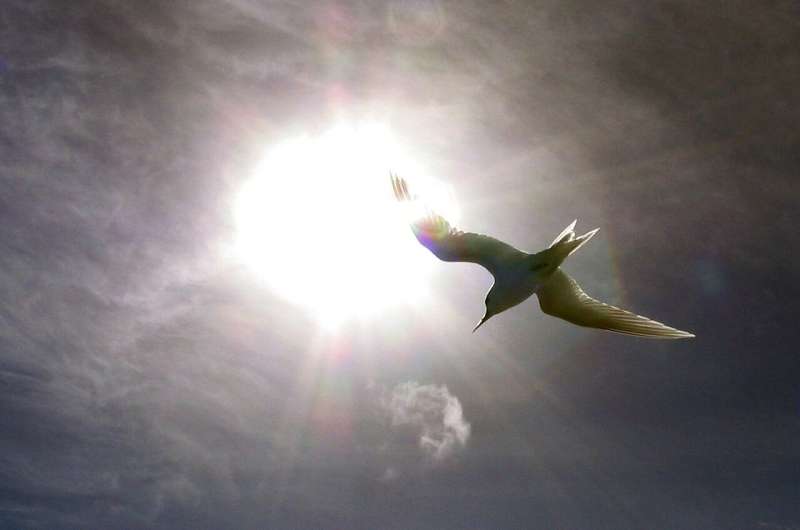Credit: CC0 Public Domain
Ph.D. student Claire Greenwell from Murdoch University's Harry Butler Institute helped to establish the successful Fairy Tern colony in Mandurah, South-Western Australia, resulting in a thriving colony containing 111 nests by late November 2018.
But following reported sightings and photographs of a white cat in the colony, the carcasses of six decapitated adult Fairy terns were found, and at least 40 chicks were found missing, injured or dead across a matter of days. By mid-December, all 111 nests in the colony had been abandoned, and the seven remaining chicks being fed by adults were eventually taken by a kestrel.
Ms Greenwell was observing the colony for her Ph.D., and said the unfortunate carnage illustrated how important the management of free-roaming cats was for protecting wildlife.
"Cats are wonderful pets but owning one comes with responsibility. That means providing them with a safe, secure environment, which helps to protect them from harm and reduces their impact on wildlife," Ms Greenwell said.
"Fairy Terns nest in colonies on shorelines, close to where their main prey of baitfish are abundant. But these locations make them vulnerable during the nesting season, especially to human impacts like coastal development and intense use of shorelines, to the extent that many former colony sites are now unsuitable for the birds.
"These impacts, coupled with predation by feral species like foxes and cats, have resulted in a 24 percent population decline in eastern Australia across just 30 years."
Ms Greenwell said the cat believed to be responsible for the deaths was captured by the City of Mandurah and dealt with in accordance with the Cat Act WA (2011). The cat had been desexed but was not collared or microchipped.
This study clearly shows that trap-neuter-release responses to semi-feral populations of cats would not be enough to stop them from hunting native species, she said.
New cat law
In response to the tern deaths and abandonment of the colony, the City of Mandurah passed a new local cat law implementing cat no-go areas, the installation of anti-cat fencing around an important migratory shorebird wetland and various cat control measures.
Ms Greenwell said community passion for the Mandurah Fairy Tern project played an important role in establishing the new cat law.
"It is great to see these new laws being adopted, which will have important implications for a range of species in the area," Ms Greenwell said.
"This is a great example of how community engagement can foster stewardship, but also the potential to change policy and management in response to issues of importance within the community."
More information: Claire N. Greenwell et al. Cat Gets Its Tern: A Case Study of Predation on a Threatened Coastal Seabird, Animals (2019). DOI: 10.3390/ani9070445
Provided by Murdoch University























